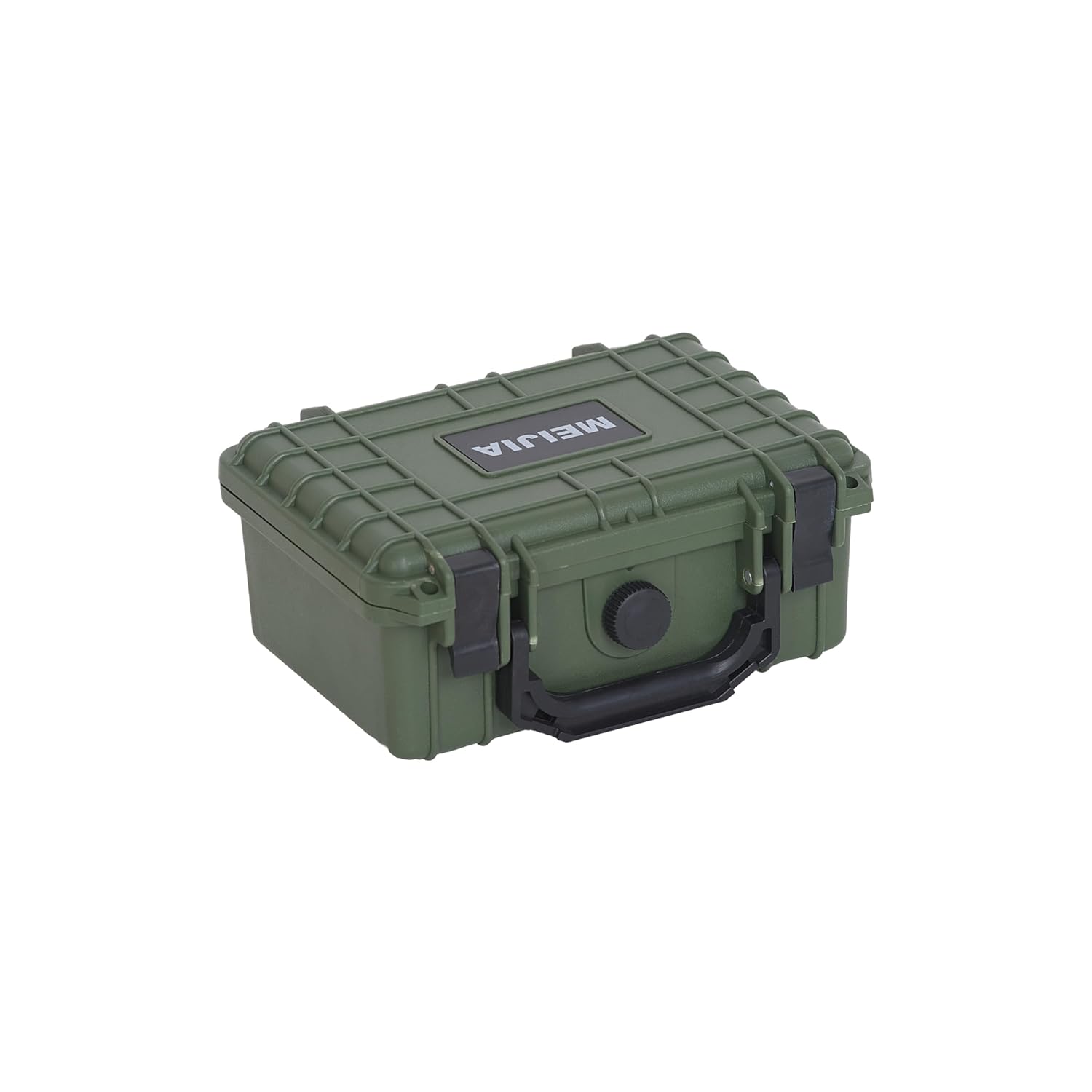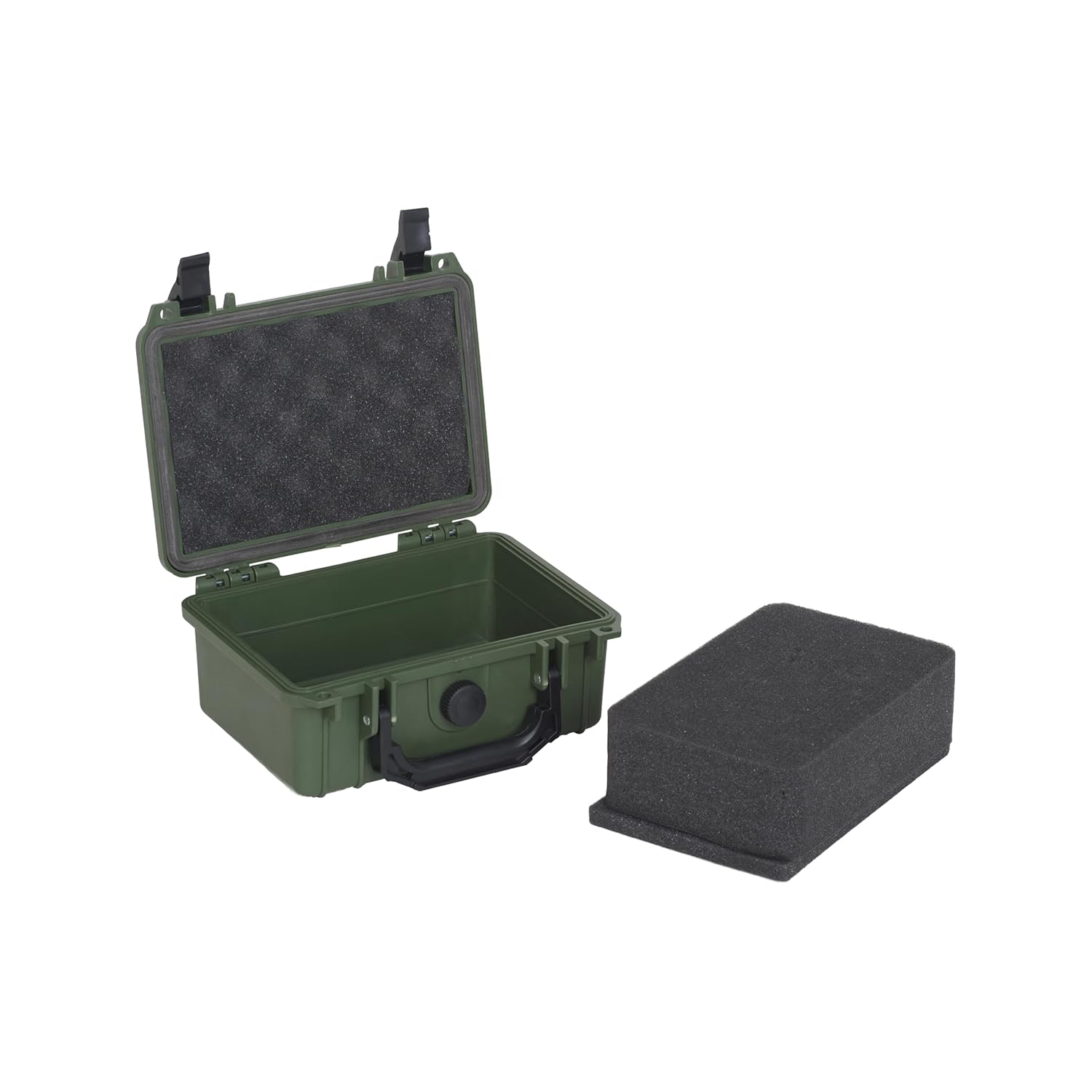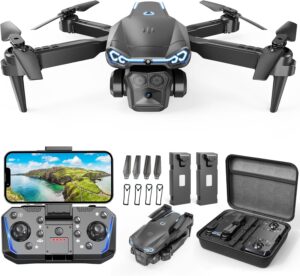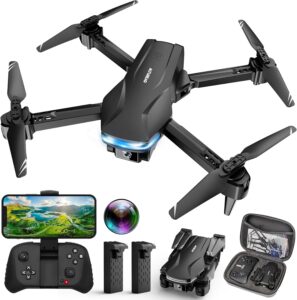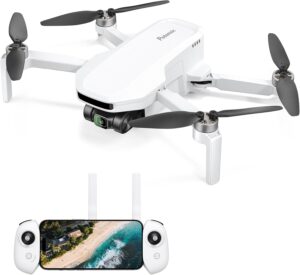What would it take for us to stop wrapping our camera in a T-shirt and hoping for the best?
Why We Reached for the MEIJIA IP67 Waterproof Hard Compact Case (Green)
We’ve given our gear a lot of questionable rides—stuffed in backpacks with half-eaten granola bars, crammed into glove compartments among loose change and expired napkins, and perched on the edge of bathtubs during “just a minute” moments that inevitably turn into slip-and-panics. Somewhere between the rainstorm that turned our messenger bag into a lukewarm aquarium and the time a lens did a short but memorable stint as a paperweight, we realized we needed a real case.
That’s how we ended up with the MEIJIA IP67 waterproof hard compact case with customizable fit foam. It’s small, it’s green, and it promises to keep our things dry and unscratched. We were skeptical in the way we are about anything that claims to be waterproof—having learned the hard way that “water-resistant” can sometimes mean “water-curious.” But IP67 is a standard with teeth, and this case showed up with quiet confidence and foam that eagerly waited to be shaped into a nest for our worries.
MEIJIA IP67 waterproof hard compact case,Customizable Fit Foam,8.12”x6.56”x 3.56”,Fit Use of Drones, Cameras,Equipments,lens (Green)
Quick Summary of the MEIJIA IP67 Waterproof Hard Compact Case, Customizable Fit Foam, 8.12” x 6.56” x 3.56” (Green)
The name does a lot of the heavy lifting: it’s a compact, IP67-rated hard case with foam you customize to your exact gear. The size sits in the sweet spot between “tiny electronics pouch” and “mini briefcase,” and the bright green color is hard to lose in a trunk or dark studio floor. We wanted something simple: a tough shell, a real seal, and foam we could shape without having to take an engineering elective. This one checked those boxes.
Key Specifications and Features at a Glance
We like a simple breakdown because it stops us from pretending we understand more than we do. Here’s what matters with this case and how we use it in real life.
| Feature | What it means for us |
|---|---|
| Model | MEIJIA IP67 waterproof hard compact case (Green) |
| Dimensions | 8.12 x 6.56 x 3.56 inches (outer); usable interior is slightly smaller due to walls, lid, and foam |
| Protection | IP67: dust tight; water immersion up to 1 meter for up to 30 minutes when properly sealed |
| Foam | Customizable fit foam; we shape it to match cameras, lenses, mics, drives, or a small drone |
| Shell | Rigid hard-plastic body; resists knocks and the occasional dramatic drop onto flooring |
| Latch | Single, firm latch with a positive snap that reassures us in a way a zipper never has |
| Color | Green; not “where did it go” black and not camping-store camo—just very findable green |
| Use Cases | Drones, cameras, equipment, lenses, accessories, audio gear, travel tech kits |
We want to be clear: interior space is always a little less than exterior numbers. If your gear fits those measurements exactly, it won’t fit inside this case. We leave a margin for the foam and the shell, and it saves us a lot of sighing.
Unboxing and First Impressions
Pulling the case out of the box felt like a small promise kept. The plastic doesn’t try to look like metal, which we appreciate. It’s honest about being what it is: a rugged, sealable container that has one job and does it without flourish. The latch closes with a satisfying click—not loud, but decisive. If you’re the kind of person who finds yourself reopening and re-closing something purely for the tactile reassurance, this latch will keep you busy for a minute.
Inside sits the foam, looking like the world’s friendliest topography. It’s ready to be shaped, and it doesn’t fight back. The lid closes evenly, the lines are clean, and the whole thing fits in the palm of one determined hand or two relaxed ones.
Size and Fit: What Actually Fits Inside
We’ve seen cases described as “compact” that could comfortably house a sleeping ferret and others that could barely manage a deck of cards. This one sits in a reasonable middle ground. It’s a mobile vault for essentials—not a full camera bag replacement, and not a keychain accessory.
Here’s what we’ve comfortably packed, one configuration at a time:
- Action camera plus two batteries, a short cable, and a tiny charger brick.
- Compact point-and-shoot camera with wrist strap, spare battery, and SD card case.
- Prime lens (think 35mm or 50mm equivalents for mirrorless systems) with caps, plus filters.
- Small field audio kit: a portable recorder, two lav mics, and a pile of adapters.
- Travel tech kit: two portable SSDs in cases, USB-C hub, cables, and a small power bank.
- Ultra-compact drone body with folded arms (think “mini” style), plus one battery and spare props; the controller usually needs a different case.
If your thing has protrusions or sticky-out bits, consider the foam to be the shape you wish you had. Since the foam yields to the contours, we’ve comfortably seated gear that looked too awkward on first glance. If you need to carry an entire camera body with a zoom lens and a grip, this isn’t the home for that relationship. But for the small and breakable? It works like a glove someone gently traced around your belongings.
A Practical Packing Scenario
For a short weekend shoot, we set this case up as an action cam survival kit. Foam shaped to cradle the camera; a little rectangle for two batteries; a narrow trench for a mini charger; and a square for a microSD case. There’s something satisfying about everything having a place. The foam’s snug fit means the camera doesn’t shimmy around, and the entire interior looks like the inside of a very organized person’s brain—an experience we rarely get in our daily lives.
The Foam: Customizable Fit Without Tears
Foam can be either your best collaborator or the enemy that crumbles at your first touch. The customizable fit foam in this case leans toward kindness. We traced our gear’s outline with a dull pencil, gently removed foam in layers, and tried the fit. Too tight? Peel a bit more. Too loose? Tuck back a sliver of foam along the edges, or leave a hairline outline next time. It’s not complicated, and we appreciate that our mistakes are rarely permanent.
Our method—developed after one too many uneven voids—goes something like this:
- We lay the gear on the foam and trace lightly around it. No Sharpies. We’re not branding cattle.
- We press down a quarter-inch beyond the outline and test how the gear settles.
- We remove foam gradually, in small sections, like trimming a bonsai we actually plan to keep alive.
- We leave the bottom layer fully intact for cushioning unless we need a deep pocket.
- We err on the side of snug. The foam will compress slightly; rattles are the enemy.
If you’re planning to rearrange the interior later, leave a buffer around each piece. The foam forgives; it’s just not a magician.
Tips to Avoid Foam Regret
We’ve earned these the hard way, one fluffy crater at a time.
- Test fit as you go. It’s easier to remove foam than to put it back.
- Leave small foam “bridges” between accessory compartments to keep the structure firm.
- If you store anything with sharp edges, consider a thin fabric layer inside your gear’s cutout.
- Keep a marked “up” orientation for gear with caps or lids; foam can press on switches if you’re not careful.
- Save the foam you remove. Strips make excellent shim material if you later need a tighter fit.
Waterproofing and Dust Protection: IP67 in Real Life
IP67 is not a marketing flourish—it’s a standard that means two things: dust can’t get in, and water won’t get in when submerged up to 1 meter for up to 30 minutes if the case is properly closed. That “if” matters. We inspect the gasket seal for a clean, unbroken ring and remove any lint or grit that might hitch a ride and ruin our day.
We did what any anxious person would do: we closed the empty case and ran water over it. The gasket held. Then we gave it a short bath because sometimes showers aren’t convincing. We dried the outside, opened it up, and found what we wanted to find—nothing. Dryness. Silence. The kind of anticlimactic conclusion we crave around valuables.
Dust protection is the other benefit that sounds dull until you stop cleaning grit out of knurled knobs and between lens rings. The seal keeps out the fine stuff too. When we have to put gear down in questionable places—beach sand, gravel parking lots, that mysterious powderiness that accumulates in studio corners—we feel better watching the lid close.
The Gasket, Latch, and How to Avoid “Operator Error”
Water gets in when we forget to do the boring tasks. Before sealing the case, we check:
- The gasket: no hair, lint, or crumb souvenirs from last week’s snack.
- The latch: fully seated until we hear and feel the click.
- The hinge: free of debris so the lid sits flush.
The case doesn’t require us to crank down or use two hands. It just asks for attention. We think of it as the polite houseguest of protective gear—unfussy, but appreciative of a wiped surface.
Build Quality and Durability
The shell is the kind of hard plastic that rejects casual abuse. We knocked it against a table leg by accident and decided to repeat the accident on purpose. No drama. The case picked up a scuff and moved on. The hinge feels stable and doesn’t give us the “eventually this will be the weak point” dread. The latch doesn’t loosen over time as far as we can tell, and the case closes evenly, which is our favorite foundational behavior in a container.
We wouldn’t stand on it for fun, but we also wouldn’t panic if it ended up at the bottom of a backpack underneath a heavy laptop and a book we keep meaning to finish. The corners are reinforced enough to shrug off a short fall, and the ridges along the body add a little stiffness and a place for our hands to grip without slipping.
Everyday Abuse We Put It Through
- Trunk shuffle test: slipped around during a few stops and starts; contents stayed put.
- Coffee dribble: wiped off with a napkin; no smell, no stain.
- Dusty shelf life: after a week in a workshop that seems determined to put grit in everything, the inside remained pristine.
- Light rain taxi run: beads of water rolled off; nothing got inside.
We’re not trying to stress-test it for a rental truck’s worth of anvils. We just want something that won’t get precious about a little real life. This case is up for that.
Ergonomics and Design: Green That Grows on Us
Green can be polarizing. We started off thinking we’d prefer something that whispered. Now we’re sold on the visibility. It’s easy to spot in a darker bag, unlikely to be forgotten on a studio floor, and borderline impossible to misplace in a car trunk that’s otherwise a museum of gloomy blacks and grays. The finish feels slightly textured, and the lines aren’t flashy. We like functional design that doesn’t perform for strangers.
Carrying it is simple; it fits in the palm and tucks neatly into a backpack or messenger. The ridges provide grip, and the corners feel like they could take a bump without needing a pep talk. It’s the modest, sturdy friend who shows up early, brings snacks, and helps you move house without making it a personality.
Use Cases: Drones, Cameras, Lenses, Equipment, and More
This is where the foam becomes a passport for your objects. We treat the case like a compact vault for a single mission—a shoot, a travel day, a day at the beach nursing fears about sand. We pack it with intention, and it rewards us by not letting accessories go feral.
- Drone kit: mini drone body, extra battery, spare props, ND filter set.
- Camera day run: compact camera, spare battery, microfiber cloth, SD cards, and a tiny blower.
- Lens transport: one prime lens, filter stack, and caps; safe from door dings and bag jostles.
- Audio essentials: small recorder, two lavs, windscreens, 3.5 mm adapters.
- Tech sanity kit: two SSDs, card reader, USB-C hub, short cables, and a travel charger.
For Drone Pilots
If you fly an ultra-compact drone, you already know the hidden cost of small: the accessories multiply. We set the foam to embrace the drone body and a battery, then made room for spare props in a shallow cutout. Most controllers will live better in a different case due to their larger footprint, but for quick flights where we rely on a phone-based controller or plan to grab just the essentials, this case is perfect. The rigid walls keep the arms safe, and the seal keeps dust out of motors that apparently invite tiny rocks for tea.
For Photographers and Filmmakers
We’ve lost count of the times we’ve told ourselves “just the one lens,” then watched that plan turn into a roll of filters, two caps, and a cable. The MEIJIA case keeps a single prime lens safe and adds slots for extras. An action camera fits like it was born for this kind of arrangement. If you shoot with a small mirrorless body, you might shoehorn it in if it’s very compact and the lens is short; otherwise, think of this as your specialized accessory chest.
For Field Recordists and Creators
We’ve carried a palm-sized recorder, two lavaliers, and those tiny foam windscreens that disappear the second you look away. The case turns this tangle into a ritual. Everything has a cutout, and the windscreens can’t bail mid-day. The foam is gentle on capsules and hard enough to keep connectors from punching through the lid’s sanity.
For Everyday Carry and Travel
We’ve also made this into a travel lifeline: passport, vaccination card, spare cash, and a tile tracker—waterproof peace of mind when boats and rain join the chat. Or a micro first-aid kit with the things we always need and never have. Or simply a nest for cables so we don’t end up buying another charging cord at an airport kiosk that seems to specialize in existential pricing.
Comparing It to Soft Pouches and Larger Cases
Soft pouches have their place; we own them, we use them, and we curse them when they fail us. They resist scratches but not crushes, they go in the wash but not underwater. Larger hard cases are majestic, but they hold more than we want to carry for a quick job. This MEIJIA compact case occupies the middle ground with conviction.
- Versus soft pouches: much better crush protection; actually waterproof when sealed; a stable platform for delicate items; slightly heavier and firmer to fit in tight pockets.
- Versus larger hard cases: easier to carry, faster to pack, less likely to become an excuse to bring everything “just in case”; obviously holds less, which can be a feature disguised as a limitation.
We use this case when we want discipline—when we know exactly what we need and refuse to be baited by the “what if” voice in our head.
Noise, Smell, and Other Oddities We Notice
No plastic smell that lingers on our hands. No squeak from the hinge. No two-handed wrestling match with the latch. In other words, none of the little irritations that usually turn up when something promises durability without the price tag of a status symbol. It’s a quiet object that does not ask to be congratulated.
Care and Maintenance
Boredom equals longevity. We give the gasket a quick wipe with a damp cloth, remove lint as if the case were about to attend a job interview, and let the foam dry if it ever gets wet before closing the lid. We store it out of direct sun and away from extreme heat. None of this is glamorous. All of it makes the case last longer.
- Keep the gasket clean; little particles cause big leaks.
- Don’t jam in oversized gear and force the lid; that’s not a personality trait we admire.
- Let the foam dry completely if damp; sealed humidity is a slow-burn villain.
- Check the latch engagement every time; the click is your green light.
Value: What We Get for the Price
We think of value as the gap between what we feared would happen and what actually happens. With this case, we feared cracked gear, wet electronics, and the depressing thud of loose batteries slamming into delicate things. What we got was a compact, durable container that stores exactly what we need and keeps it safe from water, dust, and our own tendency to pretend everything will be fine.
As compact rugged cases go, this one feels like a sensible buy. We’re paying for a real seal, a sturdy body, and foam that can be shaped without profanity. If we were equipping several kits—one for audio, one for a drone, one for action camera accessories—we’d happily standardize on this size for grab-and-go sanity.
Pros and Cons
This part reads like a dating profile because that’s how we choose gear now: compatible quirks and deal-breakers.
Pros:
- IP67 rating means real dust and water protection when sealed properly
- Customizable foam makes it feel tailored to our gear
- Compact size encourages thoughtful packing and prevents overloading
- Rigid shell and firm latch inspire confidence without fuss
- Green color is highly visible and oddly cheerful
Cons:
- Interior space is naturally smaller than the exterior measurements suggest; some kits simply won’t fit
- Foam customization takes time and care, and reconfiguration later can be messy
- Not ideal for larger cameras or a drone-plus-controller combo in one go
- No shoulder strap or soft carry options; this isn’t that kind of case
Who Should Buy It
- We carry compact but fragile gear and want reliable waterproof protection.
- We like the ritual of making cutouts so everything sits just so.
- We prefer to organize kits by task instead of dragging around a general-purpose clutter bomb.
- We need a bright, easy-to-find case that stands up to rain, dust, and the occasional knock.
Who Should Skip It
- We need to carry a bulky camera body with a large lens—this is simply too small.
- We hate foam customization and want a pre-molded interior for a specific device.
- We want to carry everything in one container; this isn’t the suitcase for that impulse.
Frequently Asked Questions
Does IP67 mean it’s fully waterproof forever?
- IP67 means it’s rated to keep water out for up to 30 minutes at up to 1 meter of depth when properly sealed. It’s generous, but it’s not a scuba license. Always check the gasket and latch.
Will it float if dropped in a lake?
- We don’t rely on floatation; buoyancy depends on what’s inside. If this matters to you, test it somewhere safe.
Can the foam be replaced?
- Yes. Foam inserts are consumable by design. If you change your kit often, consider keeping extra foam on hand to set up dedicated interiors.
Can I carry it on an airplane?
- We do. It’s compact and easy to stash in a carry-on bag. As always, check regulations for batteries and tools.
Is the case crushproof?
- It’s sturdy and resists everyday pressure and knocks. For extreme loads, consider a heavier-duty model. For daily carry, this one is convincingly tough.
Setup and Customization Guide
We treat setup like we treat assembling a sandwich we actually want to eat—careful layering with a light hand.
- Plan the layout
- Place gear on the foam to see what makes sense. Heavy items should sit near the hinge side to keep balance when opening.
- Leave room between objects so the foam stays structurally sound.
- Mark lightly
- Trace each item with a pencil using a gentle touch. Err on the tight side.
- Remove foam gradually
- Start by pinching out thin layers. Test fit after each pass rather than committing too soon.
- For small accessories, shallow cutouts are best. Don’t tunnel to the bottom unless the item requires depth.
- Protect sensitive parts
- For gear with glass or screens, leave an extra millimeter of foam around the edges and test with the lid closed to ensure nothing presses too hard.
- Create finger notches
- Add a small crescent cutout at one edge of each pocket so you can lift items easily.
- Label if it helps
- If you’re the kind of person who forgets everything, a discreet label or color code keeps shared kits consistent.
- Test the seal
- Close the lid and check even contact all around the gasket. If the case is bulging, remove a bit more foam until it closes naturally.
How It Changes Our Packing Habits
We didn’t expect a small green box to inspire discipline, but here we are. The case pushes us to think in terms of specific missions. It gets us out the door faster because decisions have already been made: the action cam kit lives here; the travel tech kit lives here. No more rummaging in a dark bag trying to tell the difference between a charging cable and a headphone cable by touch like some sort of gadget sommelier.
We also find ourselves more willing to take gear places. It’s easier to say yes to a quick shoot in unpredictable weather when we know the key items are sealed and padded. Anxiety shrinks when the foam rises to meet it.
Little Details That Surprised Us
- The latch feels better than we expected for something this compact. It’s not flimsy and it doesn’t scrape.
- The foam doesn’t shed much. We expected a blizzard of tiny black bits; got only a light dusting.
- The lid closes evenly even when the case isn’t packed perfectly—no need to baby the alignment.
- The green finish holds up after being tossed into bags with rough zippers and metal bits. Scuffs happen, but nothing dramatic.
Living With the Case: One Month In
We put this on rotation for a month, favoring it over our usual soft pouches and testing it on short trips, day shoots, and chaotic errands. It’s become the place we go to look for sanity when a session goes sideways. The foam pockets we made have held their shape, the gasket still looks clean, and the latch hasn’t loosened with use.
We’ve also noticed we argue less about who took the spare batteries because the case provides a clear, visual answer: they go here, or they’re not here. When a case becomes a small system and not just a container, we get better at not losing things. That alone would be worth it for us.
What We’d Change If We Could
No case is perfect, though this one doesn’t have any glaring flaws. If we could wave a wand, we might add:
- Optional extra foam in the box to encourage multiple layouts from day one.
- A subtle internal pocket in the lid for a thin card case or labels.
- A small, integrated nameplate area so we can mark what’s inside without stickers that eventually look like the aftermath of a rushed craft project.
None of these are deal-breakers. They’re minor niceties.
Using It as a Modular System
We found that having two or three of these cases stacked together covers most day-to-day needs. Label the spine with a paint marker—Drone, Audio, Action—and suddenly the gear shelf looks less like a garage sale and more like an intentional life choice. Because they’re modest in size, we can toss multiple cases into a larger bag without feeling like we packed a set of nesting dolls that resent us.
Field Notes and Real-World Mishaps
It only takes one short disaster to turn you into the person who uses cases. For us, it was a surprise downpour and a gullible tote bag. The MEIJIA case didn’t care about the storm we walked through. Inside was dry. Batteries stayed in their pockets. Nothing shorted. And because it’s compact, we didn’t lash ourselves to a heavy rig—we were still mobile, just not vulnerable.
Another time, we knocked a bag off a chair that shouldn’t have been trusted in the first place. The case hit the floor, angled onto one corner, then flopped onto its face. We apologized to it reflexively. It had not, however, suffered any harm. The contents didn’t even shift. We’re not saying this case forgives everything; we’re saying it forgave us that day.
The Psychology of Green
We never thought we’d have opinions about color beyond “not brown.” But this green has Opinions. It is confident, not neon; cheerful, not childish. It reads as “field gear” without trying to pass as military. When we hand it to someone, they don’t look confused. They look relieved. It’s the color you can find in the dark and the one you won’t accidentally leave on the grass. We’ve grown fond of it. We may even have structured entire outfits in its honor, but that’s between us and our laundry basket.
Sustainability, Or: Use What You Keep
We don’t have a certification to wave around here, but we do believe in using things for a long time and treating them well. The MEIJIA case feels like it will serve us for years if we clean the seal and refuse to reenact action movies with it. We’d rather buy one good case than a parade of almosts. The foam eventually shows wear; that’s the nature of foam. When it does, we’ll replace it instead of buying a whole new case. That’s our quiet version of sustainability: fewer, better objects that stick around.
Troubleshooting Common Issues
The latch won’t close smoothly
- Check for foam overstuffing or protrusions. Trim a sliver around the tallest object.
The seal looks wavy
- Inspect the gasket for debris. Clean with a damp cloth and let it dry flat before closing.
Condensation inside after a cold-to-warm transition
- Let the case acclimate before opening; this prevents moisture from forming on cold gear.
Foam pockets loosening over time
- Insert thin foam shims from your saved scraps. A little pressure brings the snugness back.
The Bottom Line In Our Words
We wanted something straightforward: a compact case that protects gear from water, dust, and the bumpier parts of life, with foam we can shape to our needs. The MEIJIA IP67 waterproof hard compact case, with its customizable fit foam and just-right size of 8.12 x 6.56 x 3.56 inches, delivers exactly that. It doesn’t posture. It doesn’t promise to carry our entire studio. It just does the job we ask of it—keeping our small essentials safe—while fitting into bags and days without drawing attention.
In an era when we can make ourselves anxious about nearly anything, this little green box reduces the list. We close the latch, hear the click, and trust that what’s inside will be exactly as we left it. That may sound simple, but in practice, it’s a small everyday luxury. We didn’t know we needed a dependable green rectangle with foam we could sculpt. Now we wouldn’t leave home without it.
Disclosure: As an Amazon Associate, I earn from qualifying purchases.
